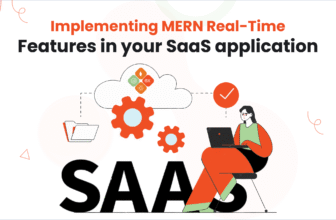
The world of work has always developed, but in recent years, the evolution of the workplace has accelerated beyond all expectations. Organizations are no longer just workplaces; they are ecosystems that combine culture, purpose, well-being, and business growth. At the heart of handling this complexity is the human resources function, which has evolved from a traditional operational department to a strategic pillar of leadership and change.
In the face of global upheavals, shifting worker expectations, and growing demands for flexibility and diversity, HR professionals are being asked to respond strategically. 2025 is a pivotal year that necessitates innovative thinking, improved people management approaches, and a new comprehension of what workers actually require to succeed.
Furthermore, talent success in 2025 is determined by agility and not only in strategy, but also in the technology that supports it. In addition to automating repetitive work, the technologies HR selects should facilitate more intelligent, moral decision-making. With increasing pressure on HR to deliver on various fronts, the correct technology foundation is more important than ever.
In today’s fast-changing workplace, staying up to date on emerging trends is critical for firms to prosper. As 2025 approaches, a number of significant changes are influencing how companies handle performance, culture, and people.
1.Generative AI Goes Mainstream in HR
Artificial intelligence has always been a component of the HR toolkit, but Generative AI and Agentic AI will be more prevalent in 2025. These solutions are capable of synthesizing human-like writing and making autonomous decisions. Recruiters are already using these technologies to create performance reviews, compile candidate information, and design job descriptions. Basic automation is surpassed by more sophisticated solutions. HR is already seeing the emergence of agentic AI, which functions with greater autonomy.
According to a report , by 2028, 15% of daily job decisions will be handled by these intelligent systems on their own. Organizations are benefiting from this early adoption by being able to delegate regular tasks, allowing HR professionals to focus more on strategic, people-focused initiatives.
2.AI‑Powered Recruitment and Smart Matching
Finding the ideal candidate is more than just volume; it’s also about precision. For recruiters who handle hundreds of applications for a single position, resume data extraction and structured data are increasingly essential. There are data processing solutions that create searchable, structured profiles from unstructured resumes. It ensures accurate, up-to-date candidate information to improve decision-making and streamline workflows.
3.Predictive People Analytics: Data-Driven HR Strategy
In 2025, HR decisions are no longer reactive. With the power of predictive analytics, HR teams can identify which employees might leave, which teams are at risk of burnout, and what skills will be needed in the next 12 months.
Research highlights a major shift toward proactive HR: 63% of global businesses now leverage predictive people analytics using data to forecast attrition, manage talent pipelines, and improve retention strategies. These solutions consolidate employee engagement data, performance records, and even wellness indicators to provide forward-looking insights that traditional reporting simply can’t match.
4.Bias-Free Hiring and Skills-First Talent Strategies
Organizations will prioritize equitable and inclusive hiring in 2025, moving away from traditional certifications and job designations. The emphasis has shifted to skills-based hiring, in which applicants are assessed based on their abilities rather than their prior education or employment history. This strategy reduces unconscious bias and makes room for a variety of talent pools, such as those from historically underrepresented backgrounds, non-degree holders, and career switchers.
There are many AI-powered solutions available in the marketplace, such as Redact& Design. These solutions help recruiters to remove personal information such as name, gender, nationality, and more from resumes. Allowing recruiters to focus solely on what matters—qualifications, experience, and potential.
5.Employee Experience Platforms (EXP): Everything, in One Place
The days of using separate systems for different HR tasks are ending. In 2025, more companies are turning to Employee Experience Platforms (EXPs), all-in-one systems that bring together wellness, learning, feedback, and communication in one place.
Instead of switching between different apps for things like payroll, training, or surveys, employees can now use a single dashboard to manage everything related to their work.
When powered by AI and analytics, these platforms can also give helpful suggestions and reminders that support personal growth, well-being, and performance—creating a more employee-friendly and supportive work environment.
6.Conversational AI & Virtual HR Assistants
HR chatbots and voice-based assistants are transitioning from novelty to norm. These tools handle routine questions, everything from leave requests to benefits inquiries, 24/7 via platforms like Slack, Teams, or mobile apps.
Adoption has accelerated: companies report 65% faster HR response times and 78% reduced administrative burden in supported teams. Conversational AI also assists with onboarding, scheduling interviews, and guiding employees through L&D pathways, making support always accessible and scalable.
7.VR and AR for Training, Onboarding, and Engagement
Interactive technologies like Virtual Reality and Augmented Reality are improving training and onboarding in areas such as manufacturing, healthcare, and retail. New hires are exposed to interactive learning modules, compliance situations, and virtual environments in place of static presentations.
These immersive solutions improve engagement and information retention, especially for teams who are geographically or remotely dispersed. Businesses that have already started using VR onboarding claim quicker ramp-up times and increased new hire engagement.
8.Wearable Technology & Wellness Monitoring
In addition to software, HR innovation is expanding into wearables and networked devices that track worker productivity and well-being while protecting privacy. These tools help HR create safer, healthier workplaces, particularly for frontline or hybrid workers, by tracking ergonomics, fatigue, physical activity, and even stress in real-time.
Combined with health check-ups, camps, and ergonomic initiatives, wearables allow HR teams to take a proactive approach to wellness. Predictive algorithms’ ability to detect early indicators of disease or exhaustion makes timely interventions possible. This development symbolizes a new era of proactive, health-focused HR policies.
9.The Rise of Ethical AI, Governance, and Trust in HR Workflows
As HR systems increasingly rely on AI, ethical oversight is becoming equally critical. In 2025, organizations are implementing AI governance platforms, regular bias audits, and explainable AI systems that make decisions transparent and accountable
Privacy regulations like GDPR and emerging AI governance frameworks require HR to align tools with legal and ethical standards. Vendors and HR teams are now trained to use AI responsibly and maintain human oversight over automated decisions.
10.Self-Service Tools and Payroll Automation
Employees are increasingly demanding autonomy, which has led to the development of self-service HR portals and automated pay/benefit systems. Without HR involvement, these solutions enable employees to see paychecks, request leave, update personal information, and even get benefits advice in 2025.
Advanced payroll software now automatically calculates taxes, bonuses, and attendance while also integrating with local compliance standards. In order to help HR improve accuracy and satisfaction, AI can also suggest customized benefit plans based on usage and performance history.
HR Practices That Are Becoming Obsolete in 2025
In addition to a wave of innovation and change in HR, 2025 also sees the end of a number of outdated processes that are no longer effective for the modern, dynamic workforce. Here are some of the trends that are going off the bandwagon-
1.Basic Applicant Tracking Systems (ATS) Without Intelligence
Standard ATS platforms, which just store resumes and follow applicants through the hiring process, are no longer sufficient. These systems frequently lack intelligent parsing, automated matching, and data-driven decision-making, resulting in manual work, delays, and missed candidates.
AI and machine learning are replacing traditional ATS systems. These solutions provide resume processing, skills-based matching, predictive analytics, and automated workflows, freeing recruiters to focus on strategy rather than administrative responsibilities.
2.Manual Onboarding Processes
A paper-heavy onboarding process that necessitates a lot of emails and documentation irritates new hires and creates a bad impression. In a remote or hybrid world, asking employees to come into the office to sign papers or complete paperwork seems outdated.
What replaces it?
Automated onboarding technologies provide a digital-first experience, including personalized welcome journeys, virtual document signing, team introductions, and self-paced training courses.
3.Top-Down Communication Models
Rigid hierarchies and closed-door decision-making hinder innovation. Employees in 2025 want to be heard and involved in organizational choices, particularly in mission-driven organizations.
What replaces it?
Transparent, two-way communication is enabled by collaboration tools such as Slack, Microsoft Teams, and corporate social platforms. Town hall meetings, employee feedback loops, and cross-functional ideation workshops are more popular.
4.Ignoring Mental Health Support
Mental health is no longer considered a taboo topic. Failing to promote your employees’ psychological well-being is not only unethical; it also poses a business risk. Burnout, disengagement, and attrition are all outcomes of neglect.
What replaces it?
Integrated wellness programs, mental health days, therapeutic and empathic leadership training for managers.
CONCLUSION
As we approach 2025, one thing is clear: the workplace is no longer what it once was. There has been a significant change in the meaning of work, company expectations, and employee objectives. Human resources professionals are now at the center of every significant organizational change, from promoting mental health and emphasizing diversity to rethinking leadership philosophies and workplace flexibility.
However, these developments bring with them their own set of issues, including talent shortages, altering workforce demographics, evolving compliance landscapes, and the constant need to balance empathy with performance. It is required of HR practitioners to be human-centered, strategic, and flexible. Curating events and creating cultures that flourish in uncertainty are now more important than process management.







